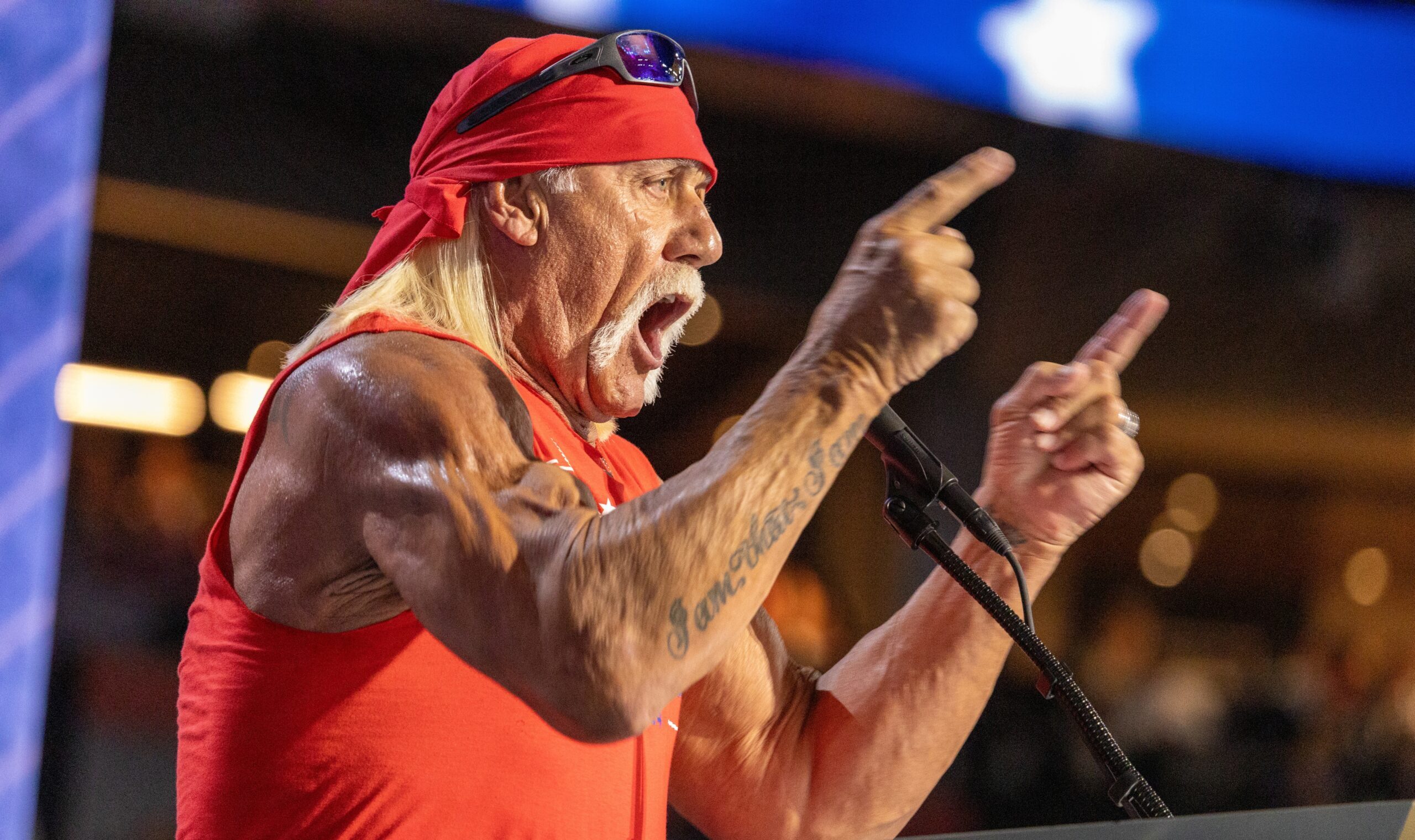TMZ reports that Hulk Hogan is dead.
Arguably the most famous professional wrestler of all time, the 71-year-old became a meteoric pop culture phenomenon in the last quarter of the 20th century and maintained high-profile relevance, in entertainment and even politics, until his death this week.
Real-life Terry Bollea was born in Augusta, Georgia and relocated to Tampa, Florida before he was two years old. In his teens, the future Hulk Hogan developed a passion for professional wrestling, attending shows at the Tampa Sportatorium, where he fell in love with top stars like “The American Dream” Dusty Rhodes and “Superstar” Billy Graham, the latter of which would have an outside influence on his own persona.
But that’s just biography. Hogan was much larger than that. For wrestling and the world.
The still-largest professional wrestling company on earth and in history, World Wrestling Entertainment (WWE), formerly the World Wrestling Federation (WWF), exists because of Hogan’s immense popularity in the mid-1980s. Vince McMahon, the currently controversial owner, had bought the Northeastern wrestling company from his father, and was poised to turn his healthy but still regional promotion into a national cable television powerhouse.
He just needed a big star.
Hulk Hogan was the perfect superhero for the 1980s and the WWF. After winning his first WWF world championship by defeating Iranian villain “The Iron Sheik” in early 1984, Hogan quickly became the “real American” who encouraged children to “train, say your prayers and eat your vitamins.” Hogan was an ideal fit for the Reagan era, the Cold War, a world of Arnold Schwarzenegger action movies, Jane Fonda workouts, and MTV. Hogan was in Rocky movies. He was friends with Mr. T. He hosted Saturday Night Live.
Hulk Hogan was the ’80s.
Businesswise, Hogan was even more of an ideal fit for McMahon, whose WWE would never have been successful without the star; in turn, Hogan’s fame would likely not have soared if not for McMahon’s new and massive platform. McMahon gambled everything on WrestleMania 1, which Hogan and his nemesis “Rowdy” Roddy Piper carried to success, and by WrestleMania 3 in 1987, the Hulkster was body slamming Andre the Giant in the Pontiac Silverdome in Michigan in front of over 80,000 fans.
Hogan would leave the wrestling business for a while in the early ’90s to focus on television and movies. But in the mid-’90s, he was central to a second major wrestling boom after his own “Hulkamania” period a decade prior, by turning “heel” (becoming a bad guy) and forming wrestling’s “New World Order” (NWO) for Ted Turner’s “World Championship Wrestling” (WCW), WWE’s top competitor.
Hogan would continue in wrestling, a highlight of which was his WrestleMania 18 match against Dwayne “The Rock” Johnson in 2002, which inspired not only fans, but left a heavy impression on many of today’s wrestling stars. True to form, he even had a popular reality show featuring his family, there was a racial slur scandal, and even a sex tape scandal.
For good or ill, the man was always in the news, or at least lurking around.
Relevant to the end, Hulk Hogan spoke at the 2024 Republican National Convention where he endorsed Donald Trump for president. When he appeared on Monday Night RAW’s Netflix debut in January, less than two months after the election—because of course the WWE was going to tap Hogan for such a big step into streaming—the blue Los Angeles crowd heavily booed the deep-red–and-yellow, MAGA wrestler.
Subscribe Today
Get daily emails in your inbox
Hulk Hogan was the most famous wrestler of his time and perhaps for all time, though Dwayne Johnson could arguably give him a run for his money. But Johnson probably wouldn’t be a major movie star if professional wrestling had not become the juggernaut that it did.
The blueprint for pro wrestling was drawn by Vince McMahon. But the house of WWE was actually built by Hulk Hogan.
